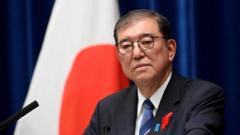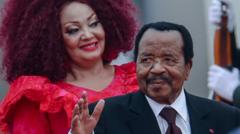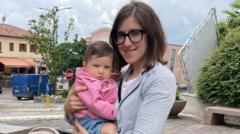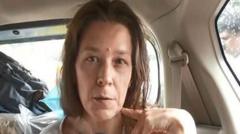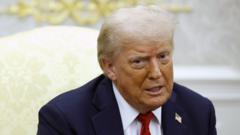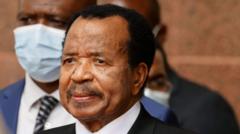Both major political parties in Australia are advancing proposals to restrict the number of foreign students allowed to study in the country, citing housing affordability as a critical concern. This shift marks a dramatic change in the nation's approach to international education, which has traditionally been a key economic sector.
Rising Restrictions Threaten Australia's International Education Landscape

Rising Restrictions Threaten Australia's International Education Landscape
Political pressure mounts in Australia to limit international student enrollments amidst escalating housing issues.
Article Text:
As the housing crisis intensifies in Australia, both major political parties are advocating for significant cuts to the number of international students allowed into the country. This move is seen as a strategy to manage soaring housing prices that are on the minds of voters ahead of the upcoming elections.
Ali Bajwa, a native of Pakistan who moved to Australia a decade ago for his doctorate in agricultural science, serves as a poignant example of the opportunities previously available to international students. As a naturalized citizen and educator at La Trobe University in Melbourne, Bajwa benefitted from Australia’s internationally renowned educational system that once celebrated foreign students as a valuable sector of the economy.
Now, however, those looking to follow in Bajwa's footsteps confront a rapidly changing landscape. Both the current government led by Prime Minister Anthony Albanese and the opposition party under Peter Dutton are discussing the potential imposition of caps on international student numbers to alleviate pressures on the housing market. Dutton has suggested a reduction of 30,000 students, capping new arrivals at 240,000 annually, while increasing visa fees steeply to as high as 5,000 Australian dollars (approximately $3,200).
The pandemic had already complicated the situation, with strict border policies preventing many international students from entering Australia. Yet, in a bid to recover from those restrictions, the government previously enacted policies favoring the influx of international scholars, ultimately resulting in record enrollment numbers — surpassing one million students last year.
Bajwa argues that limiting international students isn't the answer to the housing crisis. He advocates for more refined criteria and requirements for student visas rather than broad restrictions, emphasizing the mutual benefits of a diverse student body in Australia’s academic sphere. As political debates unfold, the fate of Australia’s international education sector hangs in the balance, leading to questions about the future of its role in a nation rooted in immigration.
As the housing crisis intensifies in Australia, both major political parties are advocating for significant cuts to the number of international students allowed into the country. This move is seen as a strategy to manage soaring housing prices that are on the minds of voters ahead of the upcoming elections.
Ali Bajwa, a native of Pakistan who moved to Australia a decade ago for his doctorate in agricultural science, serves as a poignant example of the opportunities previously available to international students. As a naturalized citizen and educator at La Trobe University in Melbourne, Bajwa benefitted from Australia’s internationally renowned educational system that once celebrated foreign students as a valuable sector of the economy.
Now, however, those looking to follow in Bajwa's footsteps confront a rapidly changing landscape. Both the current government led by Prime Minister Anthony Albanese and the opposition party under Peter Dutton are discussing the potential imposition of caps on international student numbers to alleviate pressures on the housing market. Dutton has suggested a reduction of 30,000 students, capping new arrivals at 240,000 annually, while increasing visa fees steeply to as high as 5,000 Australian dollars (approximately $3,200).
The pandemic had already complicated the situation, with strict border policies preventing many international students from entering Australia. Yet, in a bid to recover from those restrictions, the government previously enacted policies favoring the influx of international scholars, ultimately resulting in record enrollment numbers — surpassing one million students last year.
Bajwa argues that limiting international students isn't the answer to the housing crisis. He advocates for more refined criteria and requirements for student visas rather than broad restrictions, emphasizing the mutual benefits of a diverse student body in Australia’s academic sphere. As political debates unfold, the fate of Australia’s international education sector hangs in the balance, leading to questions about the future of its role in a nation rooted in immigration.





